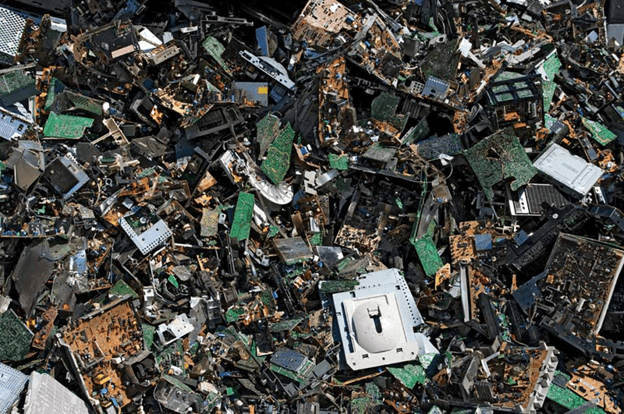
The origin of the phrase “any port in a storm” is not very clear or well documented, but the definition is. When you are facing some difficulty, you need to accept any solution without waiting for a perfect solution.
Such may have been the case at the outset of the great COVID pandemic of 2019 (and 2020, 2021, 2022, and 2023 too). When it came to dealing with the challenges of storing ever-increasing volumes of valuable data and the new phenomena of work-from-home, the cloud looked like a pretty fast and safe port in the COVID storm, and in some cases, it was and still is.
Prior to COVID-19, the term “cloud repatriation” appeared often in the press as it turned out that cloud was not a panacea for everything. But COVID understandably created short-term tactical storage strategies often resulting in a flight to the cloud.
However, the notion of cloud repatriation seems to be making a comeback, perhaps as a result of the prevailing conditions of economic uncertainty, geo-political tension, inflation, tightening budgets, cyber threats, and other factors. But it’s no longer a question of cloud vs on-premises. Savvy IT managers have the option of a more strategic hybrid cloud approach where the best of public cloud plus on-premises infrastructure provides maximum flexibility and value.
 A new white paper written by Dr. Shawn Brume of IBM entitled Reducing Risk and CO2e in the Disposition of IBM Physical Tape Media does a great job in answering what to do with tape media at end-of-life (EOL).
A new white paper written by Dr. Shawn Brume of IBM entitled Reducing Risk and CO2e in the Disposition of IBM Physical Tape Media does a great job in answering what to do with tape media at end-of-life (EOL).
The report is timely as the industry is gaining interest and awareness of energy consumption in data storage driven by ESG directives. For example, a recent white paper by Brad Johns Consulting, Improving Information Technology Sustainability with Modern Tape Storage demonstrates the sustainability and cost-benefit of tape:
It’s that time of year again to look ahead at what the New Year might bring in terms of data storage. Looking back at our predictions for 2022 to see how well we did, I think we nailed 4 out 5.


It seems like 2022 was a busy year in data storage and that was reflected on the white paper and research report front. Below is a compilation of my top 6 favorites from this past calendar year that I am glad to share for easy access. Happy reading and Happy New Year!
 The 27th Conference of the Parties to the United Nations Framework Convention on Climate Change (COP 27) concluded on November 20, 2022 with some poignant comments by António Guterres, the Secretary-General of the United Nations:
The 27th Conference of the Parties to the United Nations Framework Convention on Climate Change (COP 27) concluded on November 20, 2022 with some poignant comments by António Guterres, the Secretary-General of the United Nations:
“It will take each and every one of us fighting in the trenches each and every day. Together, let’s not relent in the fight for climate justice and climate ambition. We can and must win this battle for our lives”.
Reading these words inspired me to look back on the year of 2022 and acknowledge that we in the IT industry are focused on sustainability as evidenced by the trade show agendas that commonly addressed this issue.

Sustainability has been a hot issue at all of the trade shows I have attended this year from Data Center World in Austin back in March, to the Sports Video Group Forum in July, to the Flash Memory Summit in August to the Open Compute Summit in October. So it was not surprising that SC22 held in Dallas earlier this month also had a heavy sustainability agenda for its HPC target market.
In this executive Q&A, Jim Ghelfi, Head of Hyperscale Accounts, discusses his role at FUJIFILM Recording Media U.S.A. and how tape and FRMU can benefit hyperscale environments.

Ransomware continues to be a big concern for IT professionals and corporate stakeholders as this lucrative criminal activity promises to be with us for the long term. Research from Kroll found that the financial toll suffered courtesy of a significant cyberattack amounts to at least $5 million per attack. In about one-third of cases, it cost organizations between $10 million and $25 million. 16% said it amounted to more than $25 million. This total includes loss of market valuation. When a company is attacked, there is widespread PR fallout to contend with. Customers, partners, and investors hear about it and become wary. Stock prices fall, attrition rates increase, and new business is difficult to obtain. It takes time to ride the wave of negative publicity.

I had the privilege of attending the OCP 2022 Summit held in San Jose last week with the theme of “Empowering Open”. I say privilege because it was inspirational for me, and I suspect for many of the 4,000 or so attendees as well. The reason for that was the announcement by OCP Foundation CEO George Tchaparian (pictured at right) that the four tenets of OCP that have acted as guiding principles for 11 years now, namely Efficiency, Openness, Scalability, and Impact are to be enhanced with a fifth tenet, and that is Sustainability. It is the mission of OCP to foster innovation in the data center industry and now sustainability must be a part of all the ideas that OCP incubates and advances. George shared his vision that the modern data center will not only be scalable but also sustainable!
We can help you reduce cost, decrease vendor lock-in, and increase productivity of storage staff while ensuring accessibility and longevity of data.
Contact Us >